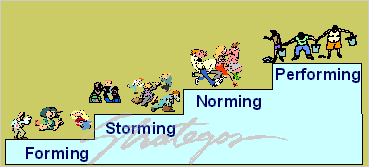Teams In Lean Manufacturing
Why We Need Them
The Power of Teams
Lean Manufacturing and Lean Operations place different demands on people and organizational structures. It requires more varied task skills, more flexibility in work assignments and deeper knowledge of processes and quality. More conventional, bureaucratic and functionally oriented organizations do not fit with lean. Failure to change culture and organization is the most common reason that Lean efforts fall short.
Trained and mature teams typically make better decisions. They solve problems better. They motivate people for superior performance and they can coordinate tasks better than a collection of individuals.
Problem-Solving
Problems in an organization are often complex and difficult. Root causes are hidden. Solutions are elusive and often ineffective. How many times have you dealt with a problem that crops up again and again? How many times have you dealt with a problem that was supposedly resolved?
Trained, diverse, and mature work teams address problems better than individuals or other groups. From training and experience they dig deep for the root causes. Diversity brings logical, emotional, and intuitive intelligences to bear on an issue. Solutions are often simple, elegant, and effective. Competent work teams make better decisions for the same reasons.

Motivation
Motivation is superior with teams, especially Self Directed Work Teams. Think of your feelings while on a winning sports team to appreciate this power. Teams appeal to the higher motivators. They satisfy cravings for social interaction, esteem, and self-actualization.
Coordination
Excellent coordination is also evident in work teams. This is especially important where multiple, sequential tasks take place. The sports analogy applies here as well.
The Downside
This performance comes at a price: decisions are slow, work teams require extensive training and months to mature. However, the benefits far outweigh the difficulties and frustrations.
The power and effectiveness of work teams can be a strategic advantage in business. However, they are not for management that is impatient, arrogant or unwilling to invest time, attention, and training. In the articles below we explore the conditions success.
Types of Teams
 Problem-Solving and Self Directed Work Teams are the most common types.
Problem-Solving and Self Directed Work Teams are the most common types.
Problem-solving teams have members from different parts of an organization. The purpose is to solve a problem and disband at task completion. They usually employ a leader or facilitator.
Work Teams are ongoing. Their mission is to manage and coordinate daily work. They draw members from the same department or area. Ideally, they perform a series of sequential tasks that result in a finished product. Work teams may switch to the problem-solving mode to deal with an impediment.
Work teams may have any of several leadership arrangements. Some have appointed leaders; others have no formal leader. Intermediate arrangements such as elected leaders or facilitators are also effective.
Stages of Team Development
Self-Directed Work Teams develop in four stages: Forming, Storming, Norming, and Performing. It is management's task to provide training, coaching, and an environment that promotes progression through these stages.
Forming
This beginning stage lasts a few days or weeks. People think about their new tasks and new environment. Members plan their work and their new roles. Emotions are positive. The work team should also learn about team processes in preparation for rough times ahead. They need to learn the rudiments of conflict resolution, communication, time management, and group decision-making.
Storming
The anticipation and enthusiasm of the forming stage quickly falls away as the team faces a myriad of technical, interpersonal and social problems. They fight and argue. People feel frustration, resentment, and anger as problems fester and work goes undone.
Managers also experience frustration and are tempted to intervene. Members are on an emotional roller coaster from elation to depression and back again. The situation seems bleak. With proper training and support, the Storming period may last 1-2 months. Without training and support, the team may not progress.
Conflict has a bad reputation. But, conflict is normal, natural, and even necessary. Handled well it builds skill and confidence as the team enters the Norming Stage.
Norming
Here, the team works through individual and social issues. They establish their own norms of behavior. Members begin to trust each other.
As the team develops interpersonal skills, it also hones other skills. Members become increasingly adept at problem solving. They cross-train and learn new job skills. They manage their time and their quality with growing competence, confidence, and independence. The Norming stage usually is 4-12 months.
Performing
Now things begin to click. Members help each other, conflict is de-personalized, problems are solved and successive goals achieved and exceeded. Satisfaction and pride become the dominant emotions. The team takes pride in their work, pride in their accomplishments, and pride in their team. Individuals take pride in their membership.
■ ■ ■ ■ ■ ■ ■



